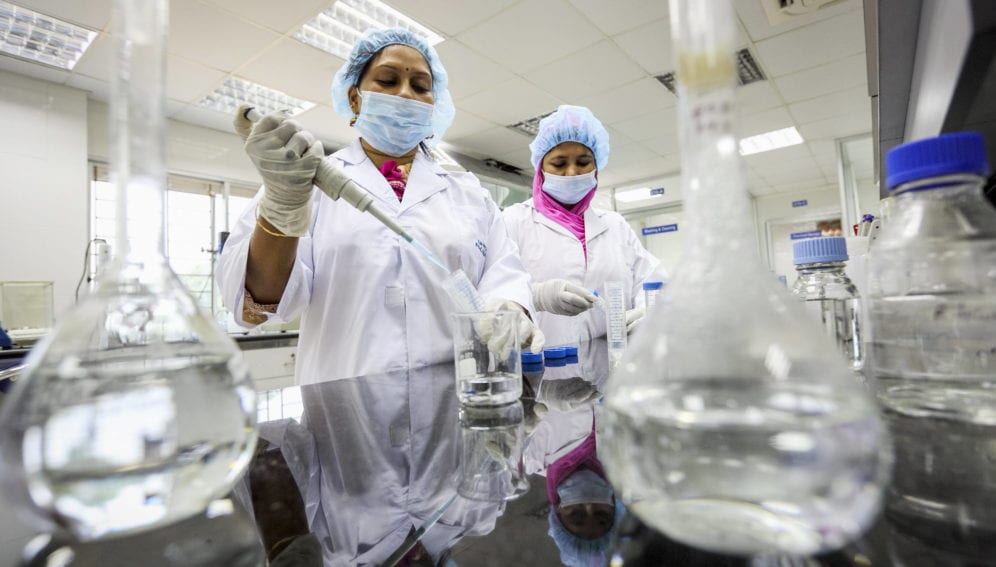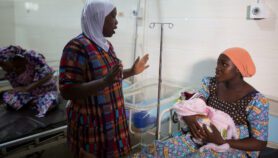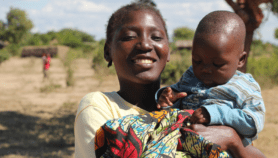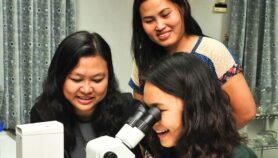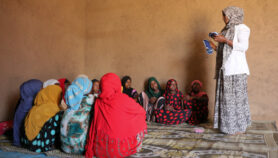Send to a friend
The details you provide on this page will not be used to send unsolicited email, and will not be sold to a 3rd party. See privacy policy.
One of the earliest projects Federica di Palma got involved in was also among the most prestigious in her career. In the early 2000s, di Palma participated in the human genome project – and identified the genes behind several deafness syndromes.
Di Palma’s fascination with genetics led her to study for a PhD in immunogenetics in the UK. She won the Fogarty Fellowship from the UK’s National Institute of Deafness and Communication disorders.
She was also director of vertebrate genome biology at the Broad Institute, a genomics research centre in Cambridge, Massachusetts.
Now di Palma is director of science at the Earlham Institute, a biological science research centre in Norwich, UK. She also leads BRIDGE Colombia, a network of scientists aiming to build long term research links between the south American country and the UK. Di Palma tells SciDev.Net about the importance of biodiversity for development and gives some tips to women starting out in science.
What part of your research has been the most exciting?
My group studied coelacanths, rare deep sea fishes that were considered extinct, but then rediscovered in the early 20th century. It first appeared hundreds of millions of years ago and has fins that resemble the trotting legs of a horse; they move alternately. These are thought to be the precursors of the limbs of humans and four-legged vertebrates. During our investigation, we took part of the gene of the fish and implanted it into a mouse. The mouse grew limb buds as a result. That caused quite a stir!
Why does genetic diversity matter in conservation?
Knowing about diversity within species helps us to manage biodiversity. Usually, when species are threatened, there is less diversity in their genome and they are less likely to survive. If that’s the case, you can introduce some management strategies. This is important because climate change and human activity are destroying the diverse ecosystems that are the foundation for human existence.
Does your research have uses in developing countries?
Most certainly. In South America, for example, cocoa contains a high proportion of the poisonous element cadmium. It is absorbed by the plants from the soil, and this is threatening cocoa exports. Using DNA sequencing technology, we are characterising the soil to see where we can find cocoa species that are more resistant to cadmium, where there is less cadmium or where you could grow cocoa more sustainably.
What are you working on now?
My most recent project in Colombia has £6.5 million (US$8.3 million) worth of funding from the UK government. Through my leadership, the team will not only analyse DNA, but how people interact with biodiversity and why it is important for a country in the tropics. The tropics have the highest levels of biodiversity, and Colombia contains many undiscovered species. Since 2016, when the government signed a ceasefire deal with a guerrilla group, more of Colombia has opened up. The government is financing the exploration of unknown territory. The research will help develop the country’s bioeconomy, for example by stimulating innovation in coffee agriculture.
What do you do to attract more women to your field?
My group regularly engages with local schools to showcase our science, my personal story and the winding path I took. The idea is to encourage both boys and girls. At the moment, woman scientists need to work twice as hard as men to get the same recognition. Therefore, we need better gender balance at all levels, including among conference speakers, in faculty jobs, on boards and so on. Women also need support from men. I’ve got this far and had four children, but not made a big deal of it. It’s good that a woman can be successful and have a family, and I’ve done that because of my passion for what I do.
What gender-based obstacles have you encountered and how have you overcome them?
When I reflect on this I often think about the recent movie The Post, which follows the female owner of a newspaper in the patriarchal world of the 1970s. I truly related to the main character entering a boardroom full of men. The glass ceiling is only part of the problem and we demonstrated it can be broken.
But once you break it, there is the issue of staying where you’ve gotten. As the movie highlighted, women’s voices are heard but not really listened to – they are often quickly dismissed.
What kind of advice would you give to a female researcher just starting out?
Follow your passion; don’t let anyone or anything distract you from that. And learn to accept, cherish and celebrate your talents. Women suffer a lot more than men from imposter syndrome as a direct consequence of what I said above. To counter that, surround yourselves with good and trustworthy collaborators and sponsors. I’ve also had great support from my husband, friends and family. It takes a village to ensure a woman can break the glass ceiling!


